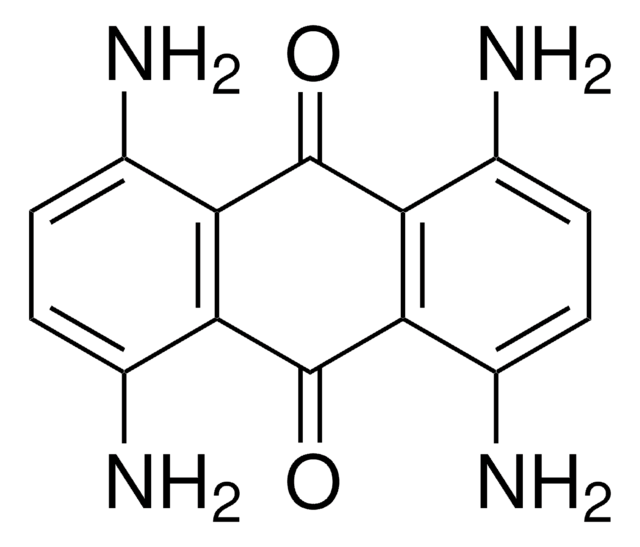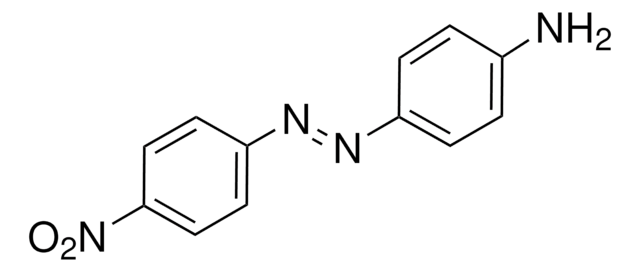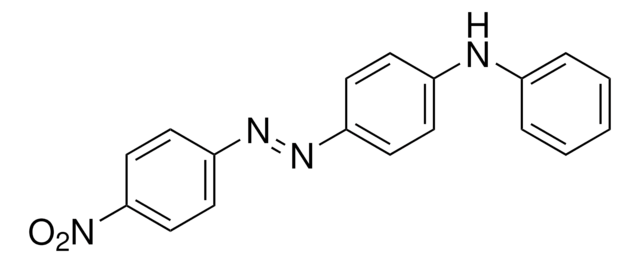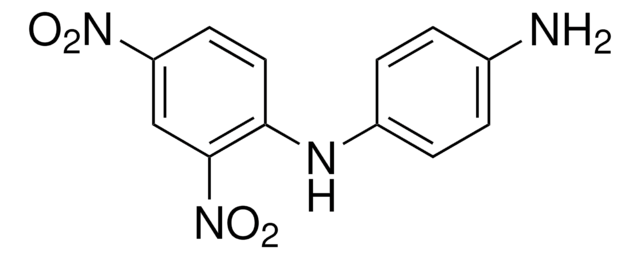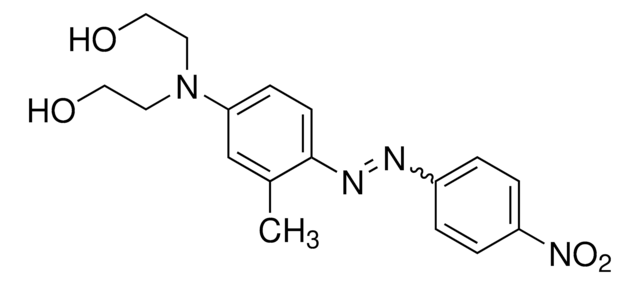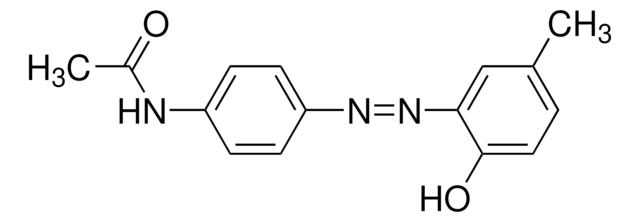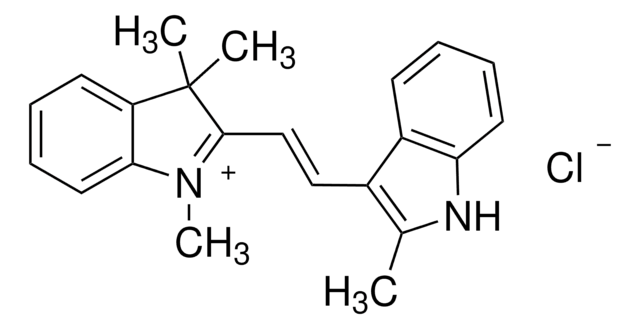21603
Disperse Orange 37
for microscopy
Sinonimo/i:
3-[4-(2,6-Dichloro-4-nitrophenylazo)-N-ethylanilino]propionitrile
About This Item
Prodotti consigliati
Grado
for microscopy
Livello qualitativo
Stato
powder
ε (coefficiente d’estinzione)
≥250 at 415-425 nm in methanol
applicazioni
diagnostic assay manufacturing
hematology
histology
Temperatura di conservazione
room temp
Stringa SMILE
CCN(CCC#N)c1ccc(cc1)\N=N\c2c(Cl)cc(cc2Cl)[N+]([O-])=O
InChI
1S/C17H15Cl2N5O2/c1-2-23(9-3-8-20)13-6-4-12(5-7-13)21-22-17-15(18)10-14(24(25)26)11-16(17)19/h4-7,10-11H,2-3,9H2,1H3/b22-21+
KHZRTXVUEZJYNE-QURGRASLSA-N
Cerchi prodotti simili? Visita Guida al confronto tra prodotti
Descrizione generale
Applicazioni
Altre note
Avvertenze
Warning
Indicazioni di pericolo
Consigli di prudenza
Classi di pericolo
Skin Sens. 1
Codice della classe di stoccaggio
11 - Combustible Solids
Classe di pericolosità dell'acqua (WGK)
WGK 3
Punto d’infiammabilità (°F)
Not applicable
Punto d’infiammabilità (°C)
Not applicable
Dispositivi di protezione individuale
dust mask type N95 (US), Eyeshields, Faceshields, Gloves
Scegli una delle versioni più recenti:
Certificati d'analisi (COA)
Ci dispiace, ma al momento non ci sono COA disponibili online per questo prodotto.
Se ti serve aiuto, non esitare a contattarci Servizio Clienti
Possiedi già questo prodotto?
I documenti relativi ai prodotti acquistati recentemente sono disponibili nell’Archivio dei documenti.
Il team dei nostri ricercatori vanta grande esperienza in tutte le aree della ricerca quali Life Science, scienza dei materiali, sintesi chimica, cromatografia, discipline analitiche, ecc..
Contatta l'Assistenza Tecnica.